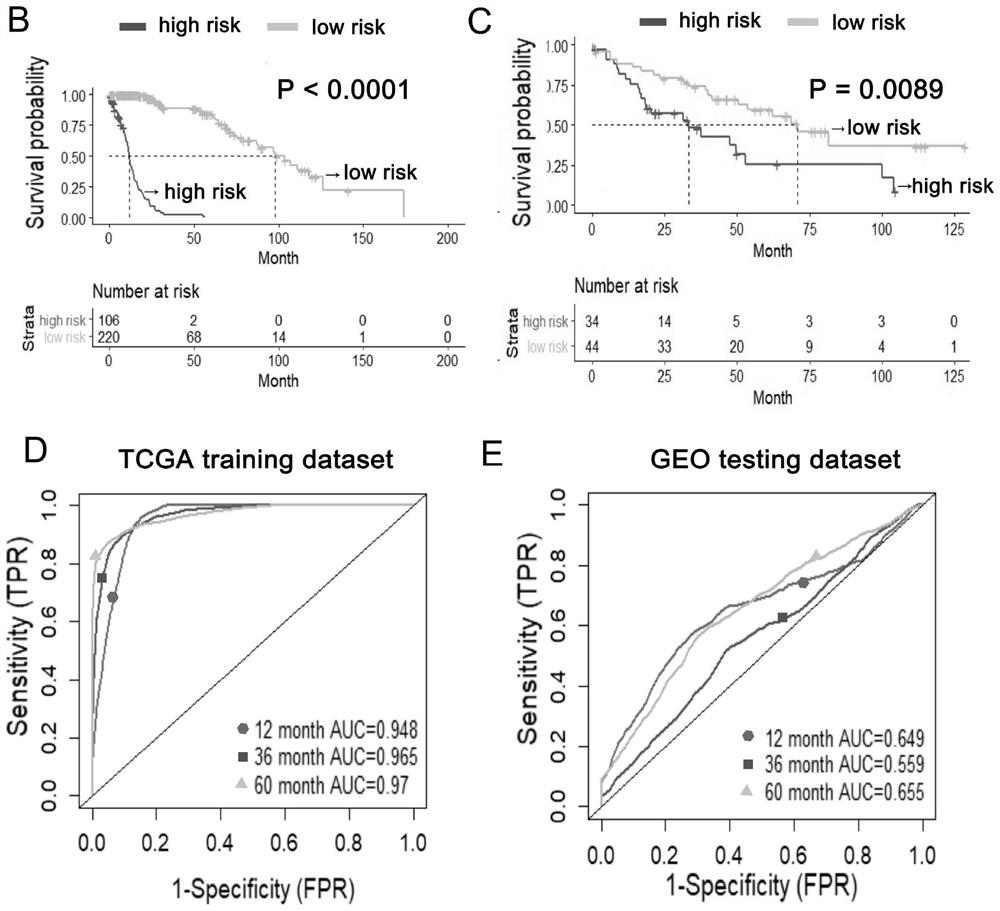Prognosis prediction model for squamous cell carcinoma and application thereof
A predictive model, technology for lung squamous cell carcinoma, applied in the field of biomedicine
- Summary
- Abstract
- Description
- Claims
- Application Information
AI Technical Summary
Problems solved by technology
Method used
Image
Examples
Embodiment 1
[0031] Example 1 Model Construction and Effect Verification
[0032] 1. Method
[0033] 1.1 Obtain the RNA sequencing data and clinical data of 326 cases of lung squamous cell carcinoma from the TCGA database, obtain the expression profile of autophagy-related genes (Autophagy-Related-Genes, ARGs), KM survival analysis screens out the ARGs related to prognosis, and draws the Kaplan-Meier survival P-values were calculated from curves and log-rank tests.
[0034] 1.2 The random forest machine learning method screened survival-related sARGs to obtain four prediction genes most related to survival, and then built a prediction model based on these four genes. (Cox regression hazard ratio model formula: Risk Score=1.313*RGS19+1.161*PINK1+1.037*CTSD+1.098*CFLAR) Patients were divided into low-risk group and high-risk group according to the risk score obtained by the model. The model was validated by receiver operating characteristic curve ROC analysis, log-rank test of KM surviva...
PUM
 Login to View More
Login to View More Abstract
Description
Claims
Application Information
 Login to View More
Login to View More - R&D
- Intellectual Property
- Life Sciences
- Materials
- Tech Scout
- Unparalleled Data Quality
- Higher Quality Content
- 60% Fewer Hallucinations
Browse by: Latest US Patents, China's latest patents, Technical Efficacy Thesaurus, Application Domain, Technology Topic, Popular Technical Reports.
© 2025 PatSnap. All rights reserved.Legal|Privacy policy|Modern Slavery Act Transparency Statement|Sitemap|About US| Contact US: help@patsnap.com



